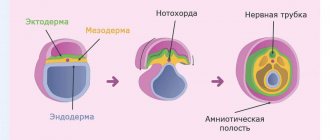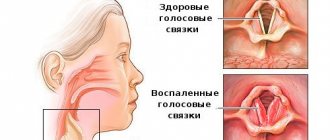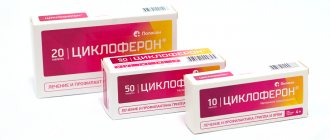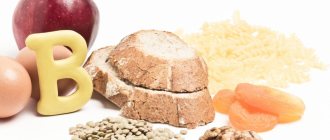Folic acid is in great demand, especially among women, due to its beneficial and irreplaceable properties. It’s not for nothing that its second name is vitamin of beauty. It not only helps prevent premature aging, but also organizes the full functioning of all organs. The endocrine, cardiovascular and musculoskeletal systems will function normally if vitamin deficiency is promptly prevented. In addition, acid does an excellent job of locking weight.
Dosage
For preventive purposes, it is enough for an adult to take 400 mcg of folic acid daily. The same dose is required for adolescents during the period of active growth in order to prevent the development of anemia and retardation in physical development.
The need for folic acid in women planning pregnancy increases sharply. Six months before the expected conception, they should start taking 1 mg of the substance daily. This will contribute to the proper formation of the baby’s nervous system and help avoid the development of congenital defects.
Beneficial properties for men
Much has been said about the beneficial effects of vitamin B9 on the female body. However, we should not forget about the benefits of folacin for the stronger half of humanity. The intake of vitamin B9 into the male body has a beneficial effect on hematopoiesis, the functioning of the brain and nervous system, reproductive functions, and also has a positive effect on the functioning of the gastrointestinal tract.
It improves potency, increases sperm quality, normalizes the level of sex hormones, and reduces the risk of male infertility. It is recommended to start taking the substance several months before conception.
Recommended video:
https://www.youtube.com/watch?v=AZFBQidVPhk
Interaction with other tools
Despite the fact that folic acid is a vitamin, before you start taking it, you should consider its compatibility with other drugs used by the patient. For example, a number of medications reduce the rate of absorption of folic acid in the intestine:
- Antacids.
- Some antibacterial agents: tetracyclines, sulfonamides, etc.
Some diuretics, for example, Triamterene, can also reduce the severity of the effect of folic acid, which should be taken into account when using them together.
Why is vitamin deficiency dangerous?
Causes of deficiency
Symptoms of B9 deficiency can be present from birth. This may be caused, for example, by a genetic disorder or disturbances in the development of the fetus. But this happens quite rarely. Vitamin deficiency in the body is usually caused by the following factors:
- gastrointestinal diseases;
- lack of greens in the diet;
- frequent consumption of alcoholic beverages;
- period of lactation and pregnancy;
- pathologies of the circulatory system;
- eating only fried or boiled foods, semi-finished products;
- taking certain medications.
Symptoms
A person does not immediately feel a deficiency of B9 in the body. The first symptoms appear after about 2–4 weeks. Usually there is a decrease in performance, apathy occurs, and frequent headaches appear. In addition, a lack of folic acid may be accompanied by the following symptoms:
- pale skin, muscle weakness due to impaired hemoglobin production;
- hair loss, deterioration of skin condition, the appearance of acne or acne;
- deterioration of appetite and impaired absorption of proteins due to decreased stomach acidity, which may result in abdominal pain, nausea and gastrointestinal disorders;
- Sleep disturbances, apathy, and depression may appear due to low serotonin levels.
Consequences
If there is a deficiency of B9, various pathological processes may begin to develop in the body. Most often, anemia occurs, which leads to disruption of the functioning of many organs due to deterioration in oxygen enrichment of tissues. This condition is accompanied by various neurological pathologies. The risk of stroke or heart attack increases.
Folic acid and vitamin E
These two vitamins complement each other when used together. Gynecologists often recommend taking them together to everyone who is planning the birth of a child. If folic acid is responsible for the prevention of congenital anomalies of the fetus, then vitamin E increases fertility and reduces the threat of miscarriage in the short term.
In addition, when used together, these vitamins help strengthen the expectant mother’s immunity and increase her performance. Vitamin E and folic acid are already included in the required dosages in special vitamin complexes for pregnant women.
pharmachologic effect
The drug has a metabolic effect, acting as a biological compound. Helps compensate for the deficiency of vitamin B9 and is involved in erythropoiesis.
After internal use, it is quickly and completely adsorbed in the digestive tract.
There is almost 100% binding of the drug components to various proteins. Penetrates well into the placenta, blood cells and breast milk.
The maximum concentration of the drug is reached after 30-60 minutes. Excretion is carried out by the kidneys, also by hemodialysis.
Is it possible to take the drug without a prescription?
Folic acid and vitamin complexes containing it are sold in pharmacies without a prescription. The amount of the drug needed by a specific person for a lack of folic acid is calculated individually based on several indicators: gender, age, general condition of the body. Therefore, in order to choose a therapeutic dosage, you should consult a doctor.
In addition, the drug has some contraindications: hypersensitivity to folic acid, cancer, vitamin B12 deficiency. If a person has such conditions, the use of folates should be completely abandoned.
Sources of vitamin B9
The human body does not synthesize such an important substance. People get it from the outside, mainly through food. Sources are:
- Green vegetables - broccoli, lettuce, asparagus, spinach, cabbage and parsley. However, during cooking, most of the substance is destroyed and goes into the water in which the vegetables were boiled or poached.
- Some types of fruits and vegetables. There is a lot of B9 in oranges, apricots and bananas, a little less in pumpkin, beets and carrots.
- Peanuts and walnuts are rich in this substance, as well as barley groats and bran bread.
- Meat and dairy products are also sources of this substance. It is mainly found in liver, chicken, eggs, real cheese and cottage cheese, some amount is found in salmon and tuna.
However, even if all these products become a daily part of your diet, you will not get the required amount of B9 - it disappears when food is cooked. That is why folic acid tablets are necessary for every person, and are especially important for women before pregnancy and during pregnancy.
Use in children
Infants usually do not need additional vitamins, since the baby receives all the necessary substances through breast milk. But in some cases, for example, pediatricians may prescribe folic acid for premature babies. The daily dose for infants is only 25 mcg.
Schoolchildren need folic acid in order to cope with increased intellectual and emotional stress. During adolescence, additional intake of the vitamin helps to establish hormonal balance, and also helps to cope with skin problems that often accompany the period of growing up. The optimal dose of folic acid for children under 10 years of age is 100 mcg per day, for adolescents – 200 mcg.
Folic acid
CAS number:
59-30-3
Gross formula:
C19H19N7O6
Appearance:
odorless yellow powder
Chemical name and synonyms:
Folic acid, N-4-[(2-Amido-4-oxo-1,4-dihydro- 6-terene)methylamino]benzoyl-L-glutamic acid;
Vitamin B; Vitamin B11; Vitamin BC; Vitamin M; L-Pteroylglutamic acid; P.G.A. Physico-chemical properties:
Molecular weight 441.40 g/mol Melting point 250 ºC alpha 20 º (c = 1, 0.1 N NaOH) Solubility in water 1.6 mg / l (25 ºC) pH: 4-4.8 (1g/10ml suspension) Decomposition temperature: >160°C Specific gravity/density: 1.59 Solubility: very slightly soluble in cold water, hot water.
Description:
Folic acid is a water-soluble vitamin consisting of three segments: pteridine, para-aminobenzenic acid and glutamic acid. Folic acid plays a vital role in cell growth and development through many reactions and processes that occur in the body, such as the histidine cycle, serine and glycine cycle, methionine cycle, thymidylate cycle and purine cycle. When folic acid deficiency occurs in the body, all the above mentioned cycles become ineffective and lead to many problems such as megaloblastic anemia, cancer and neural tube defects.
Folic acid is a synthetic form of B9 found in supplements and fortified foods, while folate is found in naturally occurring foods.
Rich sources of folate include spinach, dark leafy greens, asparagus, turnips, beets and mustard greens, Brussels sprouts, beans, soybeans, beef liver, brewer's yeast, root vegetables, whole grains, wheat germ, bulgur wheat, kidney beans, white beans, salmon, orange juice, avocado and milk. In addition, cereals and grain products are fortified with folic acid in many countries.
Folic acid deficiency impairs DNA synthesis and cell division; A common clinical manifestation of severe folate deficiency is megaloblastic (more than normal but fewer red blood cells) anemia, which is hematologically similar to anemia caused by vitamin B12 deficiency.
Application:
Folic acid is produced in the pharmaceutical industry and is used in the treatment of certain diseases, such as folate deficiency anemia. In conditions of hypo- and avitaminosis of folic acid caused by an unbalanced diet or impaired absorption in the gastrointestinal tract.
Receipt:
The method for producing folic acid includes the following steps: first, producing p-nitrobenzoyl chloride and monosodium glutamate of the intermediate compound N-aminobenzoyl glutamic acid; then methyl cyanoacetate, guanidine nitrate, sodium methoxide, prepared intermediate 6-hydroxy-2,4,5-triaminopyrimidine sulfate; and obtaining crude folic acid and purified pure folic acid. The method is characterized by a significant reduction in production costs, increased product efficiency and reduced environmental pollution.
Effect on the body:
Folic acid entering the body with food is quickly absorbed in the upper parts of the duodenum and carried by plasma proteins throughout the body. But, like most vitamins, in order to be active, it needs to be converted into coenzyme form. This is what happens in the liver - B9 is reduced to tetrahydrofolic acid (THFA).
THFA is already actively involved in the process of cell division. By attaching one-carbon molecules - formyl, methenyl, methylene, formimin and methyl - to purine bases and thydine monophosphate, it promotes the construction of DNA, the reverse conversion of sirine to glycine, molecules included in the structure of many biologically active substances (CNS mediators, hormones, purines, heme, glucose etc.). It is a carrier of the methyl group for homocysteine, which promotes its conversion to methionine (lack of folic acid leads to the accumulation of homocysteine and causes such a serious disease as homocysteinemia). Using vitamin B12 as a cofactor, folic acid can normalize high homocysteine levels by remethylating homocysteine to methionine via methionine synthetase.
Tetrahydrofolate derivatives are used in two steps of the de novo purine biosynthesis reaction; The C8 and C2 positions in the purine ring are also folate derivatives. Purine plays many important roles in cell growth, division and development as it is believed to be along with the pyrimidine backbone of the DNA helix. In case of folic acid deficiency, purine function is impaired, which means DNA production is impaired and leads to many problems in the body, since DNA is the basis of every process. DNA defects affect every part of the body, i.e. skin, bones, muscles, and can lead to Alzheimer's disease, memory loss, heart and muscle diseases, breast and ovarian cancer, and a compromised immune system
The cause of hypovitaminosis B9 is the use of drugs - antifolates, for example, the first chemotherapy drug synthesized by Subbarrao at the request of Sidney Farber - aminopterin, as well as sulfonamides, barbiturates. Lack of vitamin in food and alcoholism also lead to a deficiency of folic acid in the body.
Folate deficiency has serious impacts on human health, including causing broken chromosomes, birth defects such as neural tube defects, increased risk of colon cancer, brain dysfunction and heart disease, etc. Its deficiency is also the cause of megaloblastic anemia or megaloblastosis, an anemic blood disorder characterized by larger than normal red blood cells, or megaloblasts.
Toxicological data:
Acute toxicity. Oral LD50 - mouse - 10,000 mg/kg.
Contraindications
The use of a biologically active substance is prohibited in the following cases:
- Individual intolerance to individual components of the drug.
- Allergic reactions to Folate.
- Vitamin B12 deficiency.
- Carbohydrate deficiency.
- Impaired adsorption of galactose and glucose.
You should take the medicine with caution if you have B9 vitamin anemia with symptoms of cyanocobalamin deficiency.






